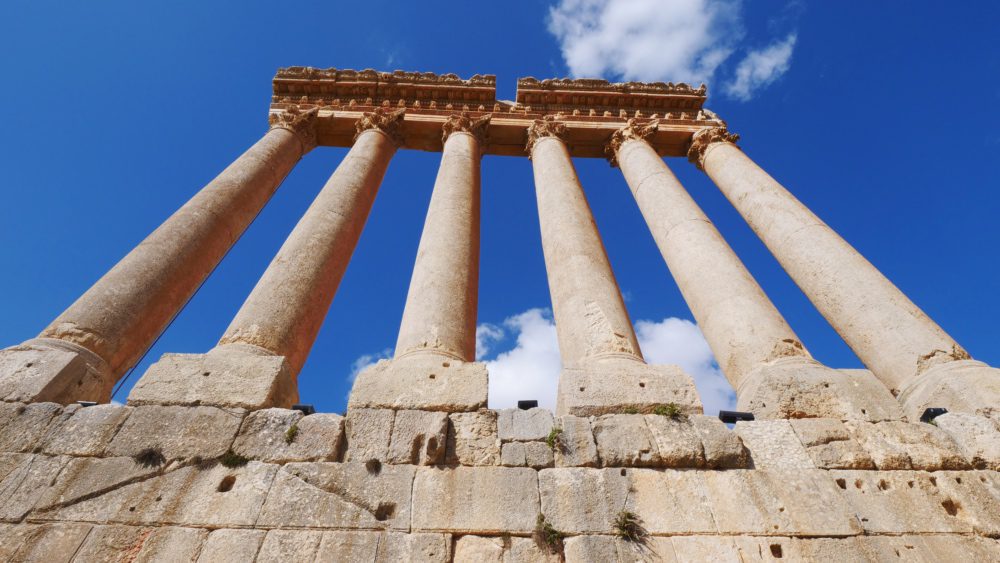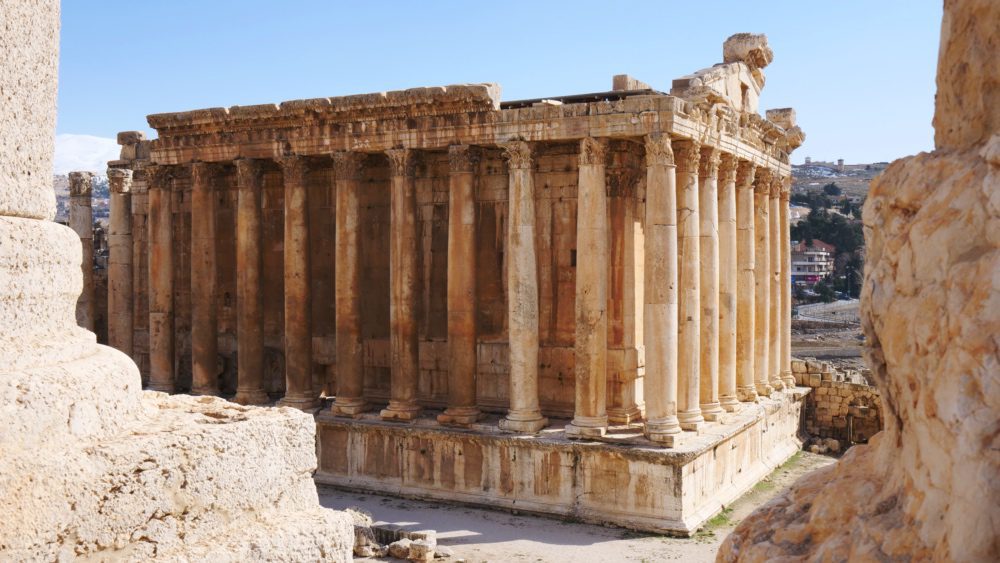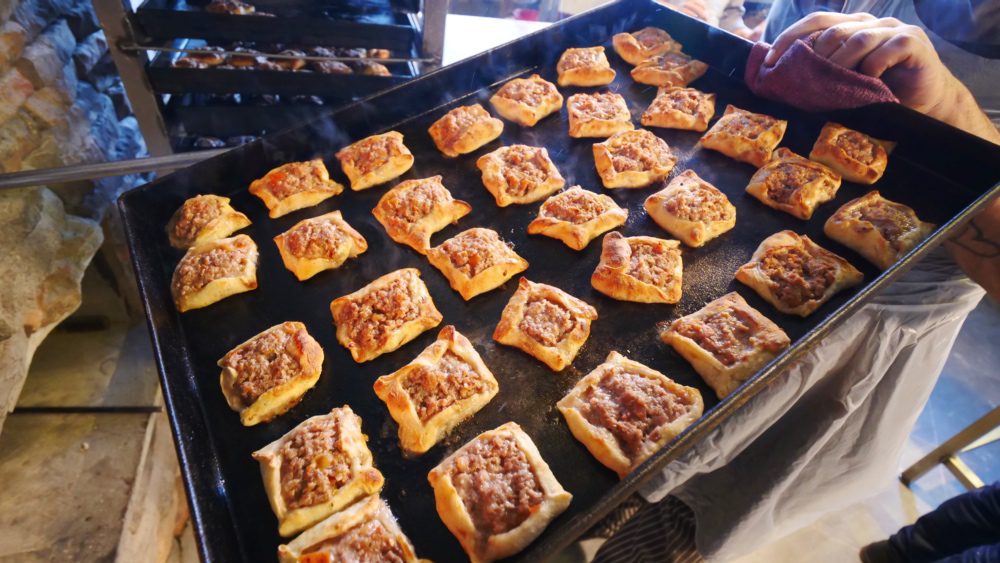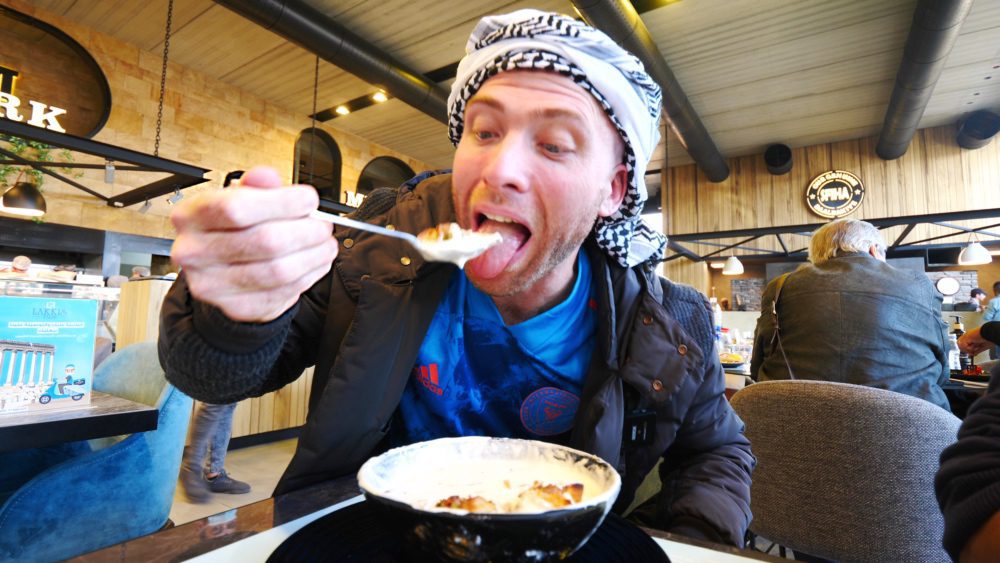As my once-in-a-lifetime trip through Lebanon continued, I stopped by one of the country’s most iconic landmarks before grabbing a bite to eat. Come with me as I enjoy Lebanese food in the ancient city of Baalbek, Lebanon!
By now, you probably know that I love food and trying the cuisines of different countries and cultures. But what you may not know is that I’m equally as passionate about history! In fact, I love history so much that the idea of visiting the ancient city of Baalbek was the main reason I chose to go to Lebanon in the first place.

Baalbek is one of the best places in the world to see ancient Roman temples. The area has been inhabited for thousands of years! It’s located about 2 hours east of Beirut and is a gold mine for history and archaeology lovers. Alexander the Great even passed through here!
The first site my friend and guide Nico saw was the Temple of Venus, the goddess of love and fertility. It cost 15 Lebanese pounds to enter the site. Inside, we saw a big courtyard where they would hold celebrations and perform animal sacrifices. It’s one of the biggest courtyards in the country!
There are massive stone blocks making up the ruins at Baalbek, Lebanon. Local stones were initially used, but then they started trading with other cultures for stones. The walls are so thick and massive!

Around the courtyard, I could see so many ruined buildings, temples, altars, and columns. The largest standing temple was the Temple of Bacchus, and there were only a few columns standing from the Temple of Jupiter.
The structures were massive! I loved the marble columns and the snowcapped mountains in the distance!
The Temple of Jupiter is built on a higher platform. I couldn’t get over the size of the columns. I’d never seen Roman columns this big in all of my travels, even at the Parthenon!

After leaving the Temple of Jupiter, we headed down a set of stairs to the Temple of Bacchus. The lion statues symbolize power and act as gargoyles and keep evil spirits away.
The stones are as big and heavy as the stones used to make the pyramids in Egypt! It was amazing to me that these stones were moved to this site.
I could also see sculptures symbolizing wine and the god of wine. There are sculptures of grapes and vines everywhere! There are also carvings of wheat because Baalbek was a center of agriculture! Baalbek, Lebanon has to be one of my favorite Roman sites of all time!

Then, we headed off to Lakkis Farm, a beautiful modern building, to get some local meat pies, known as sfeeha, which come with pomegranate molasses.
The building contains a butcher section and restaurants. There, we met Yara and watched the cooks make the dough from flour and water, fill them with lamb, and shape them into squares! They make 650 kilos of sfeeha per day here!

Then, it was time to try them. Every ingredient comes from their farms. The lamb and onion was so tasty, and I loved the crispy but fluffy dough. The juicy lamb was outstanding!
Next, they brought us some fatteh sfeeha, which came topped with ghee, garlic, and nuts. They were served in a bowl of cold, refreshing yogurt!
I loved the nutty, garlicky flavor and the light but creamy yogurt! It was the best yogurt ever!
Counter
101 Countries • 1432 Cities